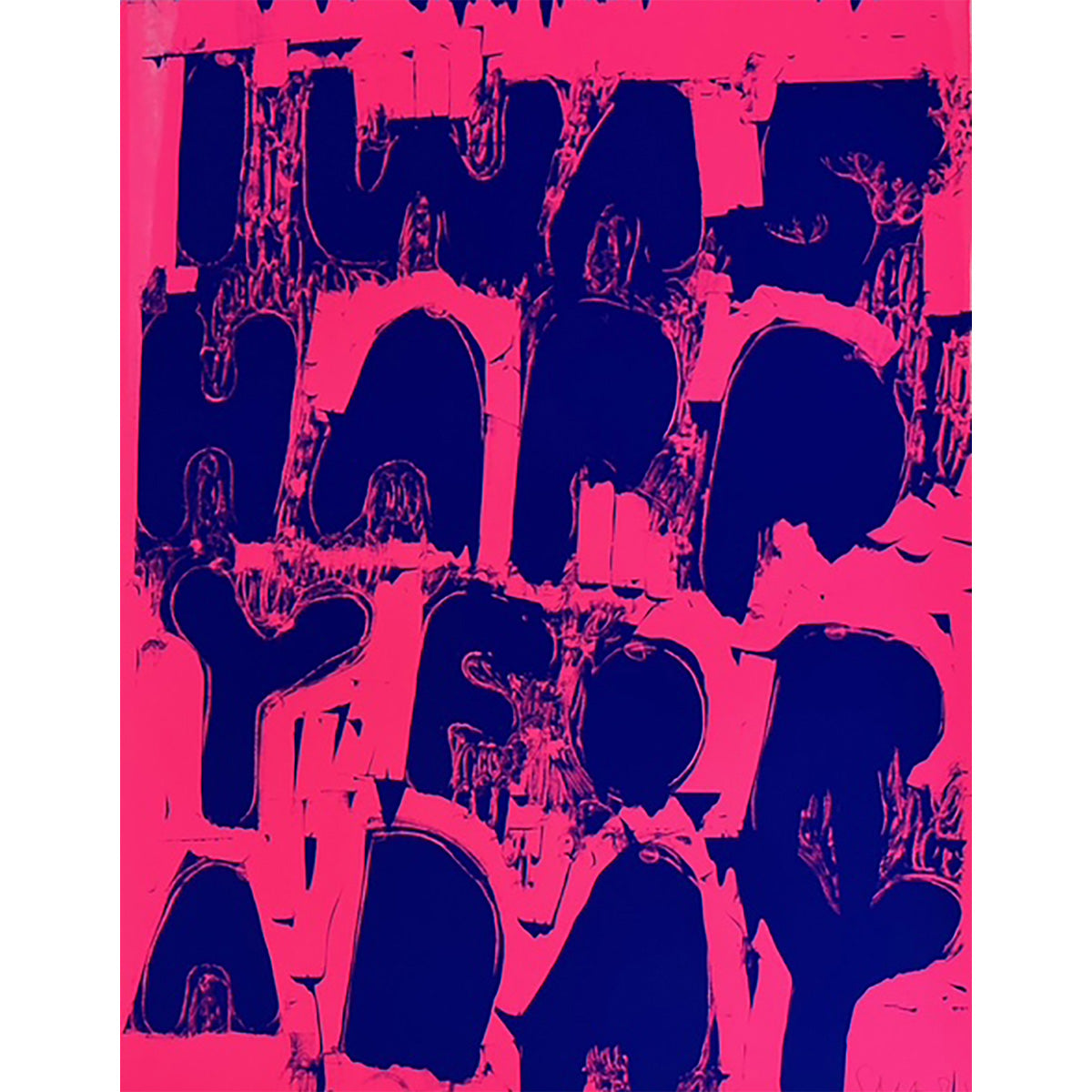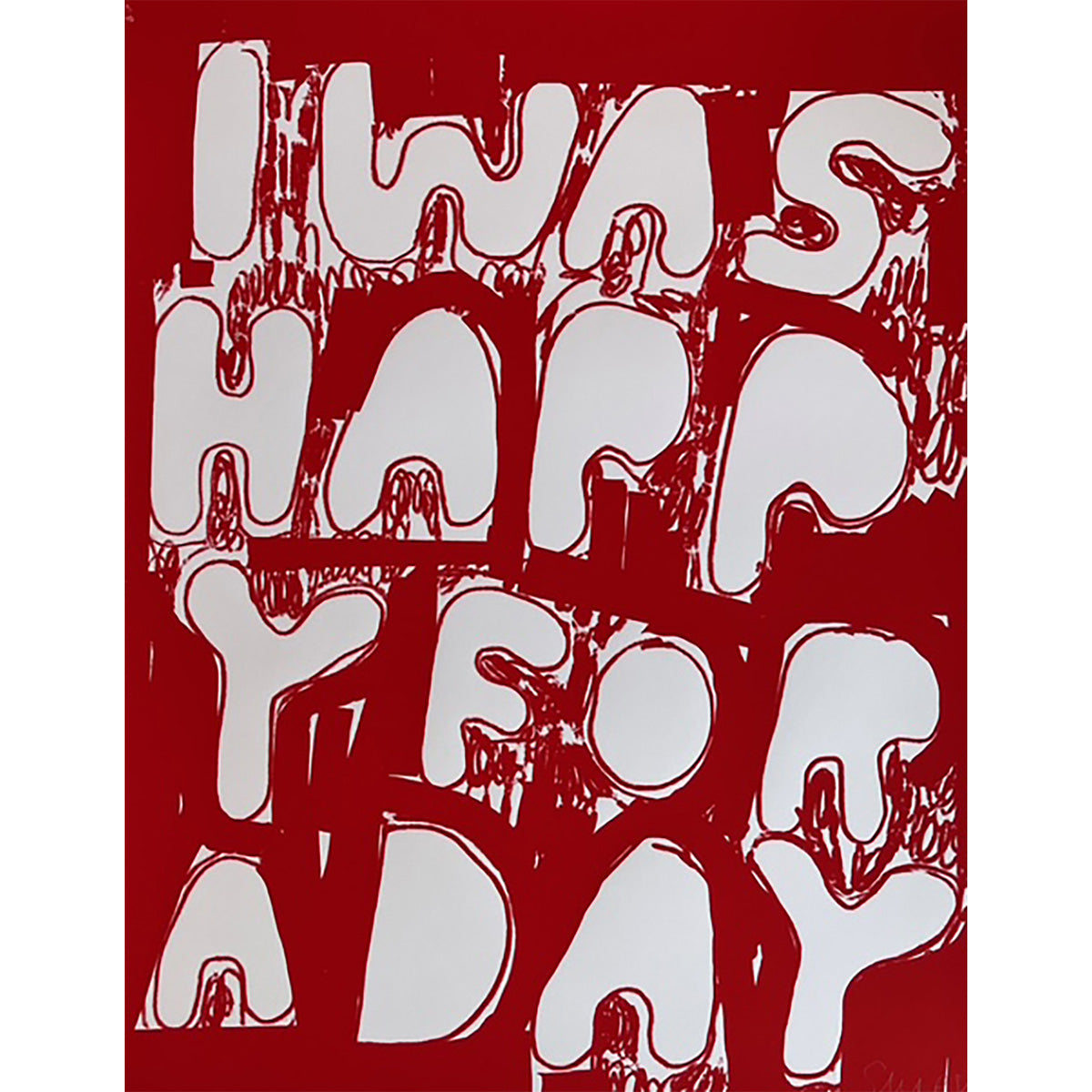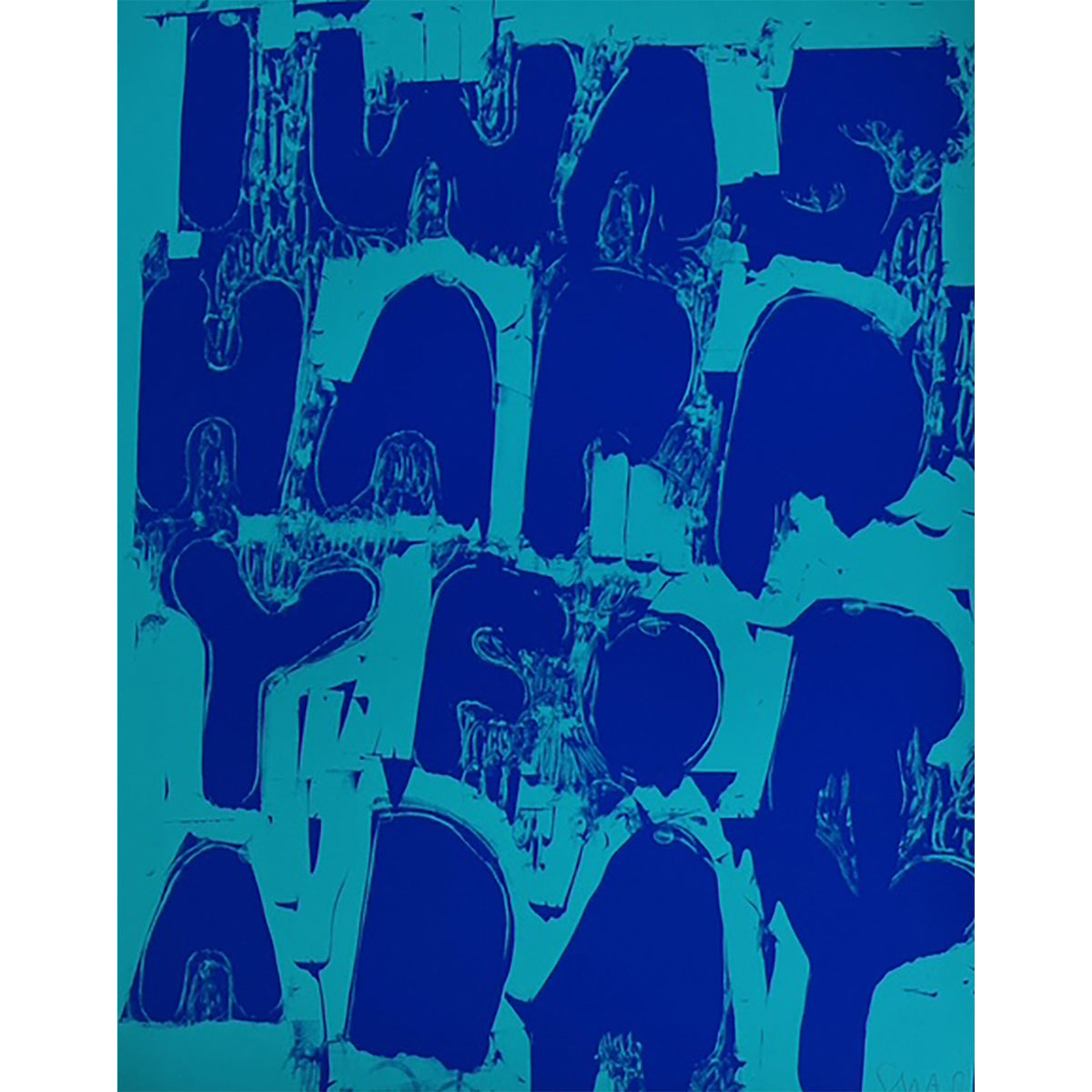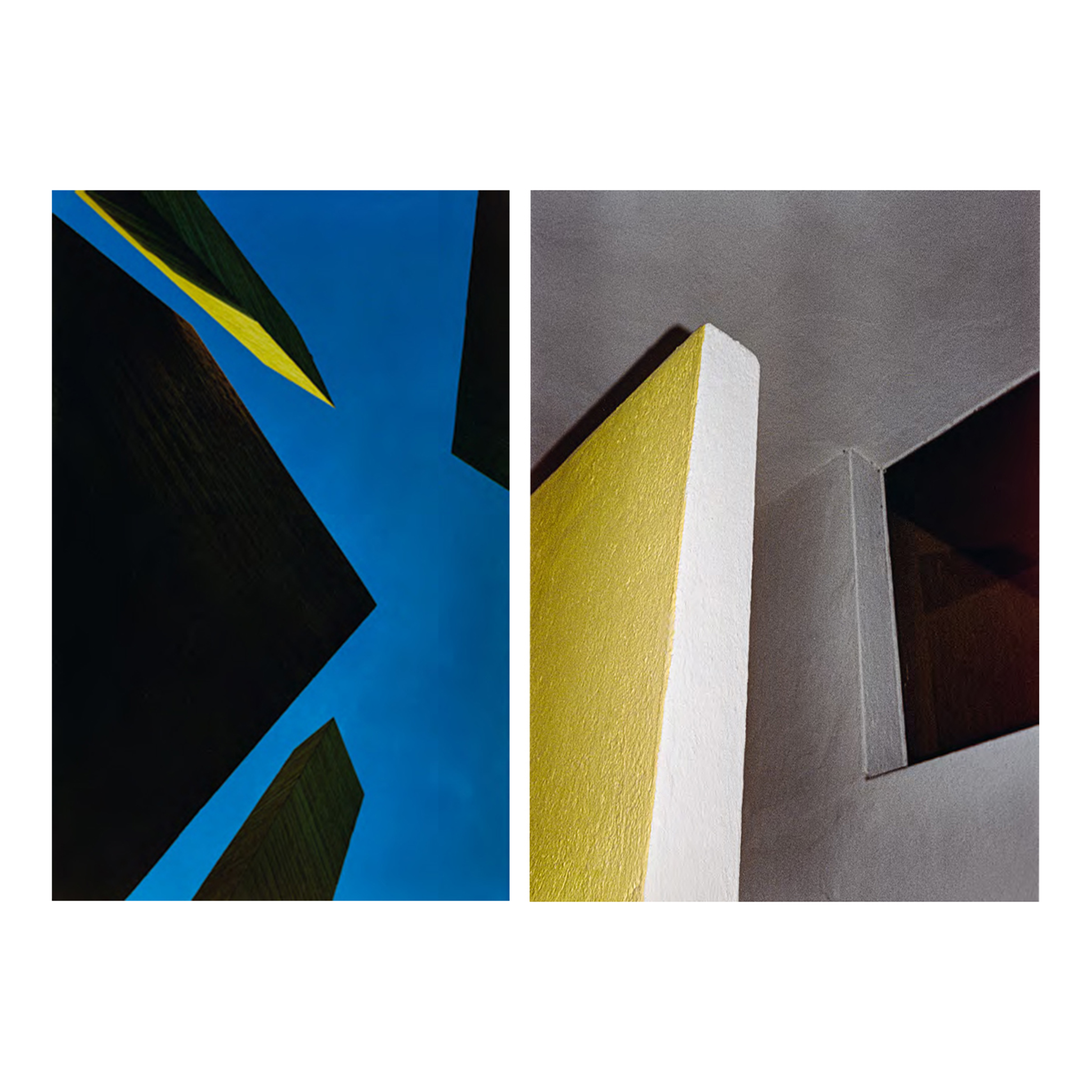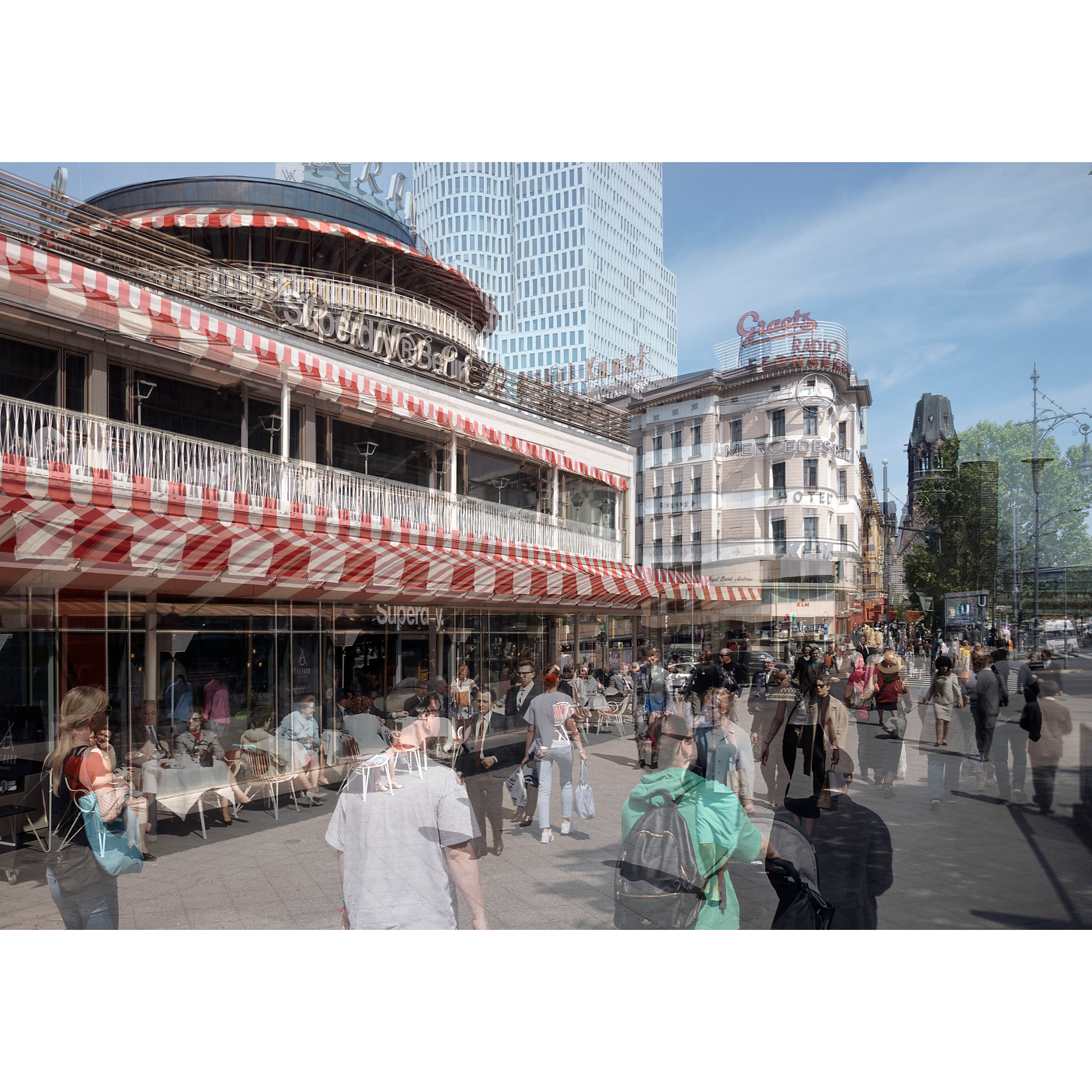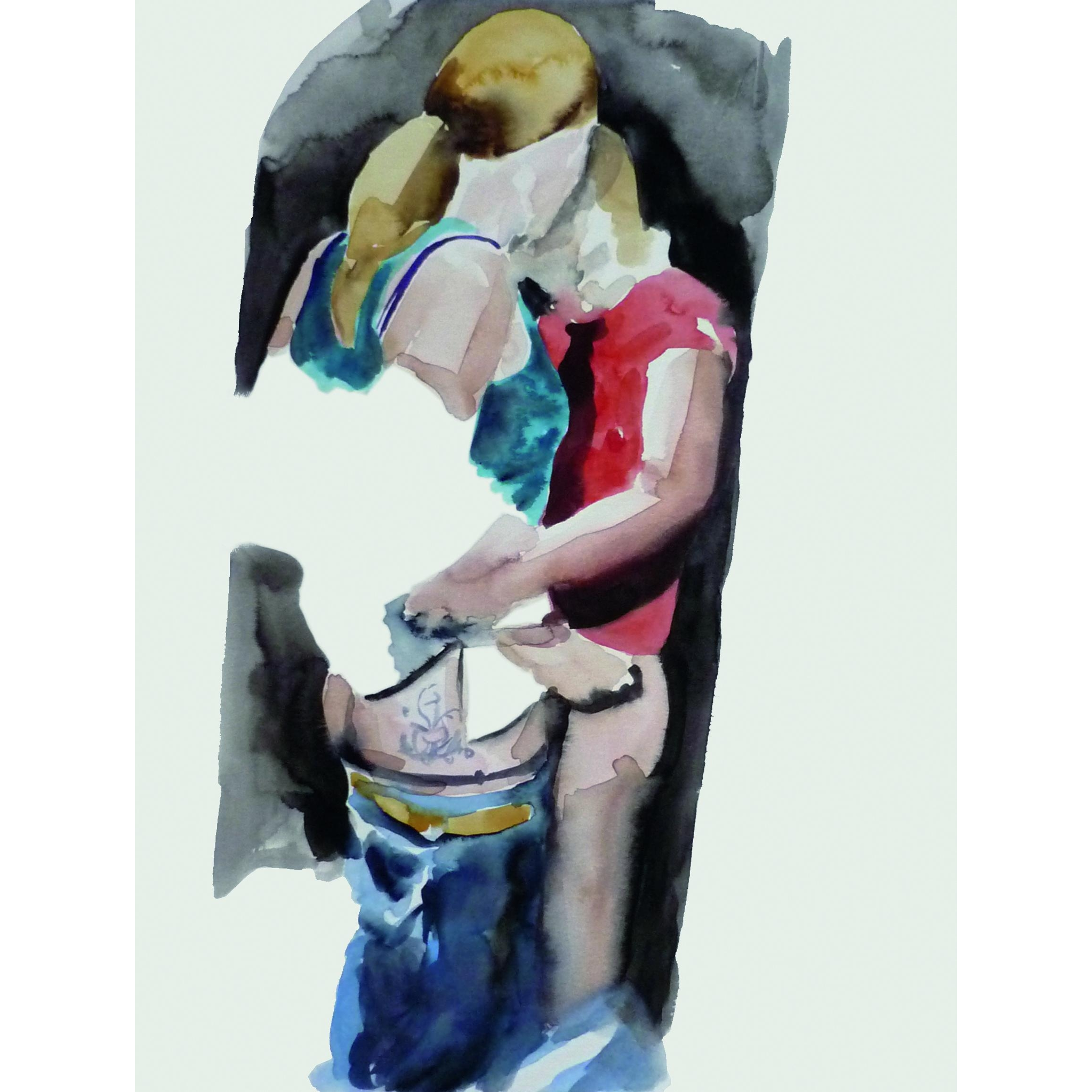
Kerstin Drechsel
NEIN, daily Vol. 3, 2011
Watercolor on 360 g Clairefontaine paper, with signed book Sheet size 32,00 x 24,00 cm Signed Edition of 21 21 original watercolors are available
Shipping Policy
Germany: €49.00
EU: €90.00
Worldwide: €200.00
Different shipping costs apply to selected editions due to size or weight. These will be calculated at checkout.
Some editions will only be made for you after your order has been received. In these cases we expect a deadline of around 4 weeks for printing and shipping.
If you have any questions, please contact your contact person at the publisher directly.
In her groups of works, Kerstin Drechsel (*1966 in Reinbek near Hamburg) tells stories about people and places in everyday, big-city life. The paintings are distinguished by their sensuality and remarkable sense of relaxation. A certain sort of harshness of subject subtly comes in the guise of watercolor-like surfaces and materials. Whether in oils and pencil, acrylics and egg tempera on canvas, or silkscreen on latex-coated fabric—the watercolor effect always lends the paintings their characteristic sensuality and sense of relaxation without ever devolving into soft focus.
The intriguing relationship between the provocative motifs and their gentle manifestations is particularly impressive in the Collector’s Edition by Kerstin Drechsel. A series of 21 originals reveals a visual cosmos in which the soft quality of the watercolors could be interpreted as a kind of stimulus and allure, or as a kind of strategic deconstruction. The luminous, velvety palette of the images has an immediately palpable beauty, forcefully drawing the gaze into the picture. At the same time, however, the artist sends the viewer back to a critical attitude toward the transparency, precision, and depth of field craved in today’s media world. Each and every motif can be seen as a plea in favor of questioning the things that are seemingly taken for granted in societal interaction, especially in gender roles and the depiction of reality in general.
Various forms of protest comprise the theme of NEIN, daily Vol. 3; they range from more less visible, superficial modes of protest, to non-conformist clothing styles or tastes in interior décor, to hidden references to gestures, signs, and everyday objects with male or female connotations. Like handwritten notes in a daily journal, the artist’s serial watercolors also seem like moments and ideas that have been rapidly jotted down or captured quick as lightning. Yet the fleeting brushwork is deceptive; the lightness of the images permits deeper insights, in the way that a journal entry always refers, without even trying, to a comprehensive world of perspectives, truths, emotions, and desires.
The watercolors pick up on motifs from earlier oil paintings or drawings, and many have been created over a longer period of time. Dried spots and traces of paint are deliberately integrated into the compositions with subversive pleasure, so that painting as a medium is visible outside of the depictions, turning it into a theme, as well. This unconventional painting style also brings up the issue of questioning artistic conventions—just as casually, almost as an aside, playfully nonchalant.
The intriguing relationship between the provocative motifs and their gentle manifestations is particularly impressive in the Collector’s Edition by Kerstin Drechsel. A series of 21 originals reveals a visual cosmos in which the soft quality of the watercolors could be interpreted as a kind of stimulus and allure, or as a kind of strategic deconstruction. The luminous, velvety palette of the images has an immediately palpable beauty, forcefully drawing the gaze into the picture. At the same time, however, the artist sends the viewer back to a critical attitude toward the transparency, precision, and depth of field craved in today’s media world. Each and every motif can be seen as a plea in favor of questioning the things that are seemingly taken for granted in societal interaction, especially in gender roles and the depiction of reality in general.
Various forms of protest comprise the theme of NEIN, daily Vol. 3; they range from more less visible, superficial modes of protest, to non-conformist clothing styles or tastes in interior décor, to hidden references to gestures, signs, and everyday objects with male or female connotations. Like handwritten notes in a daily journal, the artist’s serial watercolors also seem like moments and ideas that have been rapidly jotted down or captured quick as lightning. Yet the fleeting brushwork is deceptive; the lightness of the images permits deeper insights, in the way that a journal entry always refers, without even trying, to a comprehensive world of perspectives, truths, emotions, and desires.
The watercolors pick up on motifs from earlier oil paintings or drawings, and many have been created over a longer period of time. Dried spots and traces of paint are deliberately integrated into the compositions with subversive pleasure, so that painting as a medium is visible outside of the depictions, turning it into a theme, as well. This unconventional painting style also brings up the issue of questioning artistic conventions—just as casually, almost as an aside, playfully nonchalant.
Produktinformation Deutsch
Die unkonventionellen Malereien der Berliner Künstlerin Kerstin Drechsel (*1966 in Reinbek bei Hamburg) hinterfragen die gesellschaftlichen Normen, dominanten Schönheitsbegriffe, Rollenmuster und Intimitätsvorstellungen des heutigen Großstadtlebens. Das künstlerische Augenmerk gilt dem Ich und seiner Identität, die im öffentlichen Kontext ins Raster der Konventionen gezwängt und erst in der Privatsphäre wieder frei werden. Eine gewisse Härte des Sujets kommt subtil im Gewand wasserfarbengleicher Oberflächen und Materialien daher. Ob in Öl und Bleistift oder Acryl und Eitempera auf Leinwand sowie als Siebdruck auf latexbeschichtetem Stoff – stets verleiht der Aquarelleffekt den Bildern ihre charakteristische Sinnlichkeit und Gelöstheit ohne zur Weichzeichnung zu verkommen.
Das Spannungsverhältnis zwischen den provokativen Motiven und deren sanfter Erscheinung auf dem Bildträger zeigt sich besonders eindrücklich in der Collector’s Edition von Kerstin Drechsel. Eine Serie von 21 Originalen entfaltet einen Bilderkosmos, in dem die Unschärfe des Aquarells ebenso Reiz und Verlockung wie strategische Dekonstruktion bedeuten kann. Die leuchtend sanfte Farbigkeit der Bilder wirkt unmittelbar als stoffliche Schönheit und zieht den Blick kraftvoll ins Bild hinein. Zugleich aber wirft die Künstlerin den Betrachter auf eine kritische Haltung gegenüber den nach Transparenz, Präzision und Tiefenschärfe heischenden Bildern der Medienwelt zurück. Jedes einzelne Motiv kann als Appell gesehen werden, das scheinbar Selbstverständliche im sozialen Zusammenspiel und insbesondere das Rollenverhältnis der Geschlechter sowie die Abbildung der Realität im Allgemeinen zu hinterfragen.
NEIN, daily Vol. 3 thematisiert verschiedene Formen des Protests, die mehr oder weniger sichtbar von vordergründiger Protestmode über unangepassten Kleidungsstil oder Einrichtungsgeschmack bis hin zu versteckten Hinweisen auf die männlich bzw. weiblich konnotierten Gesten, Zeichen und Gegenstände des Alltags reichen. Wie in einer schriftlichen Notation des Tagebuchschreibens, so erscheinen auch die seriellen Aquarelle der Künstlerin als schnell dahin geworfene, blitzartig eingefangene Momente und Gedanken. Doch der flüchtige Pinselstrich täuscht, die Leichtigkeit der Bilder lässt tief blicken analog zum Tagebucheintrag, der, ohne zu wollen, immer auch verweist auf eine umfassende Welt der Ansichten, Wahrheiten, Gefühle und Wünsche.
Die Aquarelle greifen mitunter Motive aus vorherigen Ölbildern oder Zeichnungen auf und entstehen oft über längere Zeiträume hinweg. Trocknungsflecken und Malspuren werden bewusst und mit subversiver Lust in die Kompositionen eingebunden, so dass die Malerei als Medium selbst jenseits des Abgebildeten sichtbar und thematisiert wird. Die Befragung der Konventionen stellt sich angesichts dieser unkonventionellen Malweise also auch in künstlerischer Hinsicht – ebenso beiläufig, scheinbar nebenbei, lässig.
Das Spannungsverhältnis zwischen den provokativen Motiven und deren sanfter Erscheinung auf dem Bildträger zeigt sich besonders eindrücklich in der Collector’s Edition von Kerstin Drechsel. Eine Serie von 21 Originalen entfaltet einen Bilderkosmos, in dem die Unschärfe des Aquarells ebenso Reiz und Verlockung wie strategische Dekonstruktion bedeuten kann. Die leuchtend sanfte Farbigkeit der Bilder wirkt unmittelbar als stoffliche Schönheit und zieht den Blick kraftvoll ins Bild hinein. Zugleich aber wirft die Künstlerin den Betrachter auf eine kritische Haltung gegenüber den nach Transparenz, Präzision und Tiefenschärfe heischenden Bildern der Medienwelt zurück. Jedes einzelne Motiv kann als Appell gesehen werden, das scheinbar Selbstverständliche im sozialen Zusammenspiel und insbesondere das Rollenverhältnis der Geschlechter sowie die Abbildung der Realität im Allgemeinen zu hinterfragen.
NEIN, daily Vol. 3 thematisiert verschiedene Formen des Protests, die mehr oder weniger sichtbar von vordergründiger Protestmode über unangepassten Kleidungsstil oder Einrichtungsgeschmack bis hin zu versteckten Hinweisen auf die männlich bzw. weiblich konnotierten Gesten, Zeichen und Gegenstände des Alltags reichen. Wie in einer schriftlichen Notation des Tagebuchschreibens, so erscheinen auch die seriellen Aquarelle der Künstlerin als schnell dahin geworfene, blitzartig eingefangene Momente und Gedanken. Doch der flüchtige Pinselstrich täuscht, die Leichtigkeit der Bilder lässt tief blicken analog zum Tagebucheintrag, der, ohne zu wollen, immer auch verweist auf eine umfassende Welt der Ansichten, Wahrheiten, Gefühle und Wünsche.
Die Aquarelle greifen mitunter Motive aus vorherigen Ölbildern oder Zeichnungen auf und entstehen oft über längere Zeiträume hinweg. Trocknungsflecken und Malspuren werden bewusst und mit subversiver Lust in die Kompositionen eingebunden, so dass die Malerei als Medium selbst jenseits des Abgebildeten sichtbar und thematisiert wird. Die Befragung der Konventionen stellt sich angesichts dieser unkonventionellen Malweise also auch in künstlerischer Hinsicht – ebenso beiläufig, scheinbar nebenbei, lässig.
We also recommend
Lake Verea: Modern Barragán - Edition
Sale price€120,00
Stefan Marx
Sale price€980,00
Gabriele Rothemann
Sale price€360,00
Michael Wesely mit/with Herbert Maschke
Sale price€420,00

